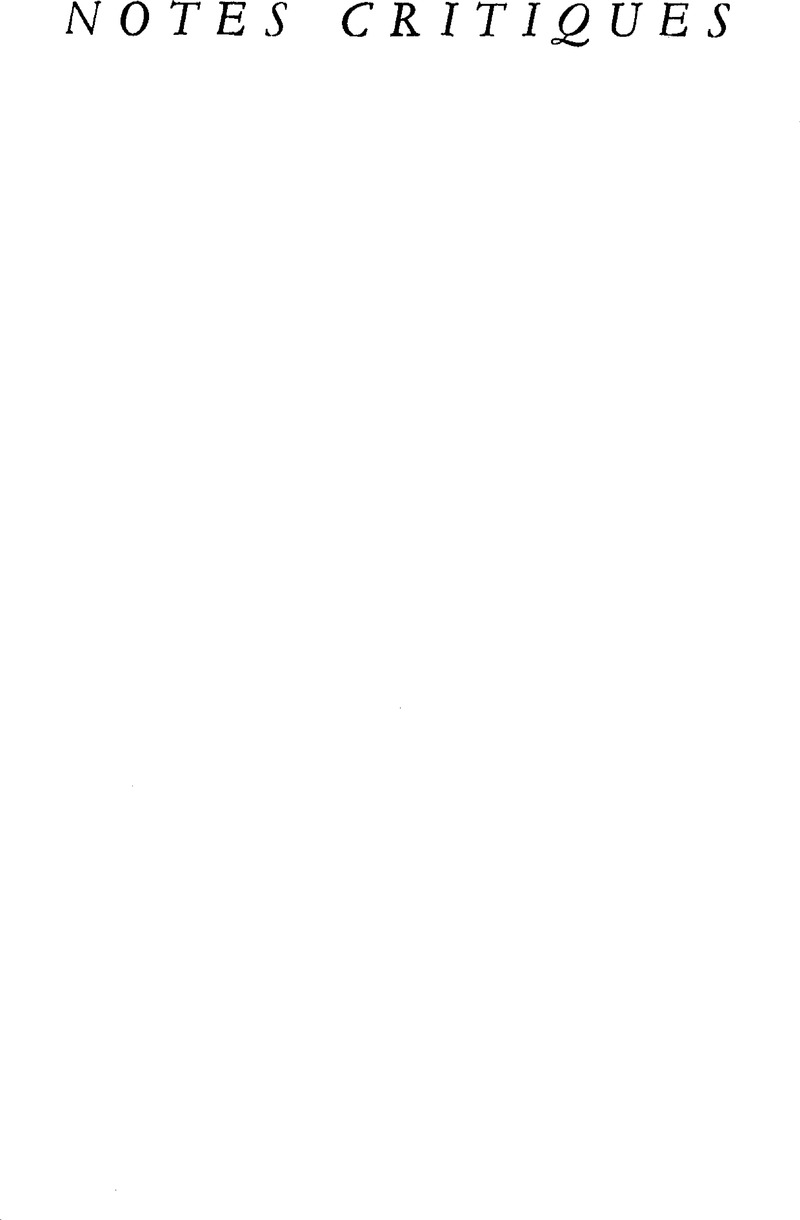Published online by Cambridge University Press: 28 July 2009

(1) Stember, Charles Herbert, Jews in the Mind of America (New York 1964), mimeographed draft, p. 233.Google Scholar
(2) Bettelheim, Bruno and Janowitz, Morris, Social Change and Prejudice (New York, The Free Press of Glencoe, 1964), pp. 11–14Google Scholar; Hyman, Herbert and Sheatsley, Paul, Attitudes Towards Desegregation, Scientific American, 221 (07, 1964), 16–23.CrossRefGoogle Scholar
(3) Most of this research and the theories underlying it has been summarized by Allport, Gordon W., The Nature of Prejudice (Cambridge, Mass., Addison-Wesley Co., 1954).Google Scholar
(4) See the suggestions of Mason, Philip, An Essay on Racial Tension (London and New York, Royal Institute of International Affairs, 1954), pp. 37–42.Google Scholar
(5) Bettelheim, and Janowitz, , op. cit. p. 80.Google Scholar
(6) One of the best criticisms of the scapegoating theory may be found in Arendt, Hannah, The Origins of Totalitarianism (New York, Harcourt, Brace and Company, 1951), pp. 3–10.Google Scholar
(7) See the criticisms of this definition by Petersen, William, The Politics of Population (Garden City, N.Y., Doubleday, 1964), PP. 238–246.Google Scholar
(8) This essentially is Allport's definition, op. cit. p. 10.
(9) See Kecskemeti, Paul, The Psychological Theory of Prejudice, Commentary, 18 (1954), 359–366.Google Scholar
(10) See Miller, William Lee, Analysis of the ‘White Backlash’, The New York Times Magazine (August 23, 1964), pp. 26, 87–88.Google Scholar
(11) Hyman, and Sheatsley, , op. cit. p. 19.Google Scholar
(12) Raab, Earl and Lipset, Seymour Martin, “The Prejudiced Society”, in Raab, Earl, ed., American Race Relations Today (Garden City, N.Y., Doubleday Anchor Books, 1962), pp. 29–55.Google Scholar
(13) Halpern, Ben, “The Findings in the Perspective of Jewish History”, (New York, 1964)Google Scholar, mimeographed for conference on “Jews in the Mind of America”, American Jewish Committee, 09 13–14, 1964.Google Scholar
(14) Rose, Arnold M., “Intergroup Relations vs. Prejudice”, Social Problems, IV (1956), 173–176.CrossRefGoogle Scholar
(15) The phrase is Arendt, Hannah's, loc. cit.Google Scholar
(16) Stember, , op. cit. p. 138.Google Scholar
(17) Mills, C. Wright, The Sociological Imagination (New York, Oxford University Press, 1959). PP. 8–13.Google Scholar
(18) Bettelheim, and Jasowitz, , op. cit. p. 68.Google Scholar
(19) Ibid. pp. 25–48.
(20) Reichmann, Eva, Hostages to Civilization (Boston, The Beacon Press, 1951), PP. 37–39.Google Scholar
(21) Ibid. pp. 227–235.
(22) Higham, John, “Social Discrimination Against Jews in America, 1830–1930”, Publication of The American Historical Society, XLVII (1957), pp. 1–33.Google Scholar
(23) Hook, Sidney, “Reflections on the Jewish Question”, Partisan Review, XVI (1949). pp. 471–472.Google Scholar
(24) Lenski, Gerhard, The Religious Factor (Garden City, N.Y., rev. ed., Doubleday, 1963).Google Scholar
(25) “Community Conflict: Christmas Observance in the Public Schools”, in Raab, Earl, editor, Religious Conflict in America (Garden City, N.Y., Doubleday, 1964), pp. 198–208.Google Scholar
(26) Sklare, Marschall, “Intermarriage and the Jewish Future”, Commentary, XXXVII (1964), 46–52.Google Scholar
(27) Stember, Charles Herbert, Education and Attitude Change (New York, Institute of Human Relations Press, 1961).Google Scholar
(28) I have borrowed the terms “from above” and “from below” from Kecskemeti, “The Psychological Theory of Prejudice”, op. cit.
(29) For Argentina see Horowitz, Irving Louis, “The Jewish Community of Buenos Aires”, Jewish Social Studies XIV (1962), 214–220.Google Scholar
(30) See Kecskemeti, Paul, “Prejudice in the Catastrophic Perspective”, Commentary, XI (1951), 286–292.Google Scholar
(31) Higham, , op. cit.Google Scholar; also by the same author, “Anti-Semitism in the Gilded Age: A Reinterpretation”, The Mississippi Valley Historical Review, XLIII (1957), 559–578.Google Scholar
(32) Baltzell, E. Digby, The Protestant Establishment: Aristocracy and Caste in America (New York, Random House, 1964).Google Scholar
(33) Sklare, , op. cit. pp. 49–51.Google Scholar
(34) For example, Cahnman, Werner J., “Socio-economic Causes of Anti-Semitism”, Social Problems, V (1957), 21–29.CrossRefGoogle Scholar
(35) Glazer, Nathan and Moynihan, Daniel Patrick, Beyond the Melting Pot (Cambridge, Mass., The M.I.T. Press and Harvard University Press, 1964), pp. 143–155.Google Scholar
(36) Hofstadter, Richard, “The Pseudo-Conservative Revolt”, in Bell, Daniel, ed., The Radical Right (Garden City, N.Y., Doubleday, 1963), p. 76.Google Scholar
(37) Rose, Arnold M., “Anti-Semitism's Root in City Hatred”, Commentary, VI (1948), pp. 374–378.Google Scholar
(38) Glazer, and Moynihan, , op. cit. pp. 71–73.Google Scholar
(39) Bettelheim, and Janowitz, , op. cit. p. 60.Google Scholar
(40) Sklare, , op. cit.Google Scholar